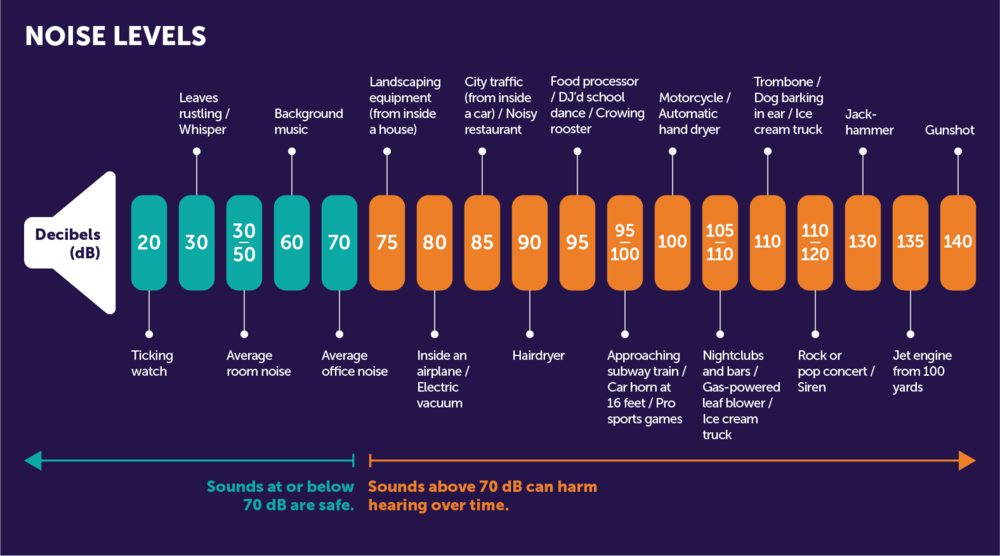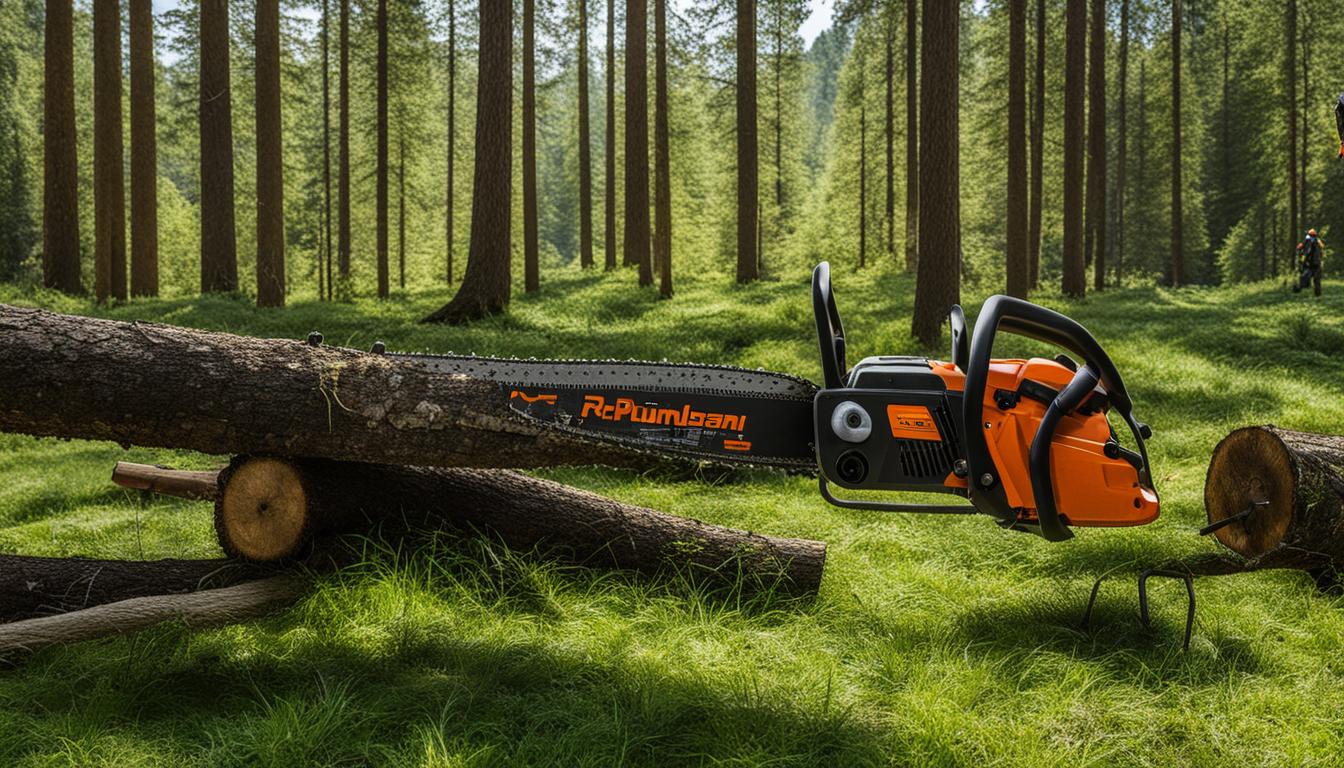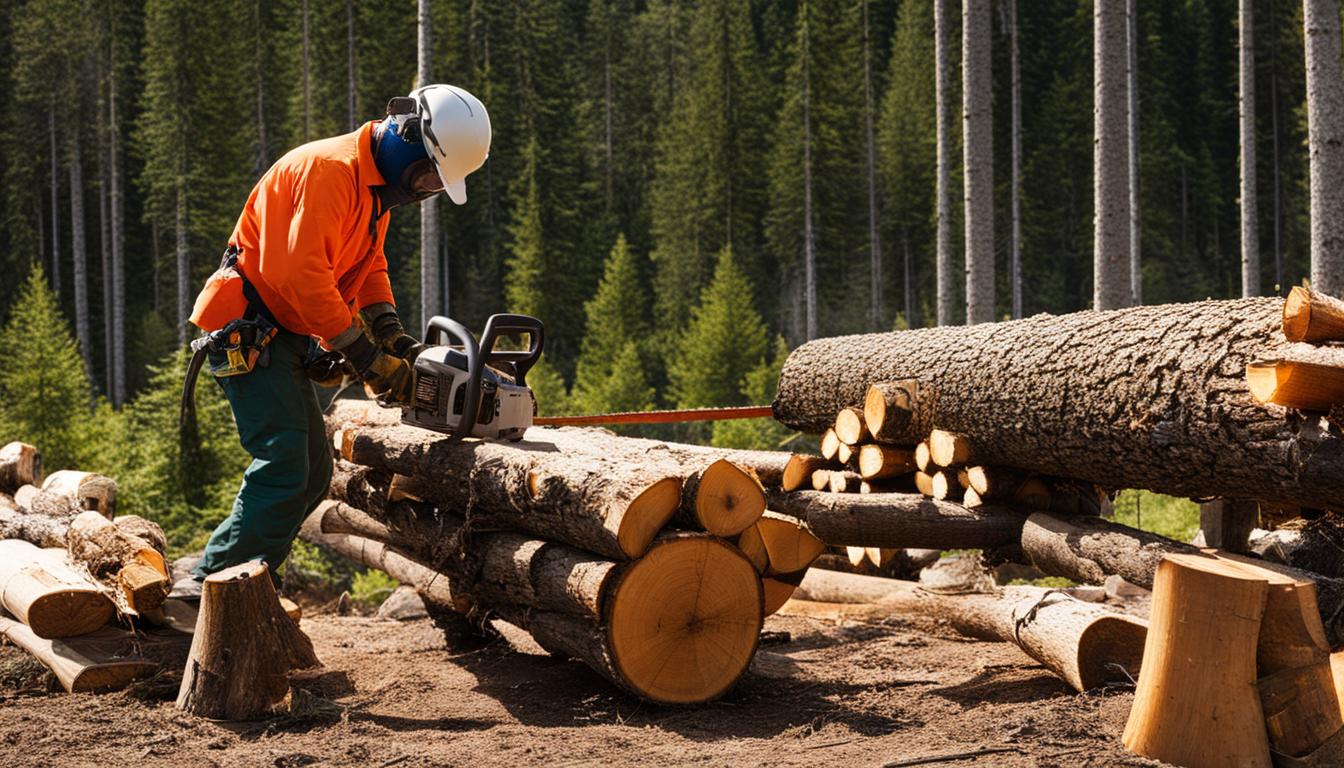We all know chainsaws aren’t quiet, but just how many decibels is a chainsaw?
We know that the average gas-powered chainsaw is around 109 dB loud. But what does this really mean?
Understanding Decibels & Protecting Your Hearing
The decibel scale is a logarithmic scale that measures sound intensity. The human ear can detect sounds ranging from 0 (the threshold of human hearing) to 140 dB.
How the Ear Works
Our ears are pretty impressive and complex machines.
When a sound is produced, our outer ear captures that sound and sends it directly to our eardrum. This tiny organ then captures the vibrations and transmits them to three tiny bones (the ossicles) connected on one side to the eardrum and on the other to the middle ear.
As the cochlea fluid moves, tiny hair cells send electric signals to the hearing nerve in the brain. From there the brain interprets these signals and tells us what we just heard.
Oh, and all of this happens in a split-second!
Our ears were designed to hear very soft sounds. And also to withstand some amount of noise exposure. That said it’s important that we protect our hearing from repeated loud sounds.
A whisper is about 30 dB, normal conversation is about 60 dB, and a motorcycle engine running is about 95 dB. Noise above 70 dB over a prolonged period of time may start to damage your hearing. Loud noise above 120 dB can cause immediate harm to your ears.
– The Center for Disease Control & Prevention
The Quietest Sounds
There are many sounds a human ear can’t even process. But on the range of things we can hear, a ticking watch clocks in around 20 decibels and a whisper is about 30 dB.
The Loudest Sound a Human can Hear
There are many sounds in the world that can be heard by human ears. But there is one sound that is the loudest noise you can hear. This sound is an extremely loud and sudden noise that can cause permanent hearing loss or even death.
The loudest noise you can hear is a supersonic boom, which has a volume of over 170 decibels. The boom happens when two things collide with each other and create a shockwave of air pressure. This shockwave then travels through the air and causes a sonic boom to be heard by people on the ground below it.
How Many Decibels is a Chainsaw?
A gas powered chainsaw has a range of 106-120 decibels. Battery powered chainsaws can be about 10 decibels quieter, but they are still very loud. No matter which of the chainsaw brands you choose, it’s going to be loud.
And more importantly, this level of noise can cause long-term hearing damage.

Protecting Your Hearing & Safely Running a Chainsaw
You should always use ear protection while operating a chainsaw. Even just two minutes at 120 dB can permanently damage your ears!
It’s no wonder that hearing loss due to noise exposure is the most common workplace injury in the USA.
Hearing protection can range from simple foam earplugs to chainsaw-specific headphones.
We especially like the ear protection that comes integrated with this helmet. It keeps us protected from falling branches, flying wood debris, and loud noises all in one. Win-win-win.
Hearing Loss & Tinnitus
Hearing loss is a common condition that occurs when the delicate hair cells in the inner ear are damaged by loud noise, aging or other causes. As these hair cells break down and die off, they no longer send signals to the brain about what’s happening in the world around you. This leads to hearing loss which can range from mild to severe.
Tinnitus is the sensation of hearing sound in one or both ears, even though there is no corresponding sound. Tinnitus is typically described as a ringing, buzzing, hissing or whistling sound. It can be intermittent or continuous and can last for seconds to minutes at a time.
3 Tips for Maximum Chainsaw Safety
Using a chainsaw is fun. But causing permanent noise induced hearing loss is not. Follow these easy tips to protect your ears.
1. Wear Ear Protection
I bet you could guess we were gonna say this. Obviously the number one thing you can do to protect your ears is where the proper ear gear. Foam ear plugs work okay. Even better are ear plugs designed for working with heavy machinery.
We’re also big fans of these earmuffs. They provide quality sound protection.
And this integrated helmet, offers complete protection.
2. Choose the Right Size Chainsaw
For light work, consider using a batter or electric chainsaw. These mini chainsaws work great for branches and small tasks around the house, while having a lower noise level.
3. Take Breaks
Taking frequent breaks not only gives your brain and ears a rest, but it also keeps your chainsaw working at peak levels.
How Loud is a Chainsaw: A Helpful FAQ
Can a Chainsaw Cause Hearing Loss?
Yes, a chainsaw has a very high noise level at an average 109 decibels. This is enough to cause noise induced hearing loss, even if you only go a short while without ear protection.
It is important to consistently wear ear plugs or some sort of headphone or ear muff to prevent hearing damage.
How Many Decibels is a Gas Chainsaw?
A gas chainsaw ranges from 106-120 decibels loud. Maintainging proper care and use of your chainsaw can help prevent hearing damage and help with noise reduction.
How Many Decibels is a Battery Chainsaw?
Generally a cordless chainsaw or electric chainsaw has a lower decibel level. In part this is due to the smaller size and power output creating a less loud sound.
While this can be nice, it’s still important to use hearing protection. The noise reduction is only about 10-20 deciebels less. So even a batter chainsaw clocks in at a very high sound level and can case hearing damage.
Conclusion: How Many Decibels is a Chainsaw?
To wrap it up, a chainsaw has a decibel output of 106-120 dB. It’s important to understand this level of chainsaw noise simply to ensure proper care and chainsaw safety are always used. Whether you choose earmuffs, ear plugs, or a chainsaw helmet with headphones attached, be sure to always use the proper chainsaw safety gear.
Protect yourself from chainsaw noise, avoid unneccesary hearing loss, and keep on cutting wood.
-
Chainsaw Leaking Bar Oil – Solution

If your chainsaw is leaking bar oil, it can create a mess and affect the performance of the chainsaw. Understanding why chainsaws leak oil is important in order to find a solution. Lubrication is crucial for the chain and bar of the chainsaw, as it promotes longevity and prevents damage. The oil tank in chainsaws…
-
How to Make a Chainsaw Winch

Are you looking for a cost-effective solution to lift and move heavy loads? Look no further! In this article, we will show you step-by-step how to make your own DIY chainsaw winch. With just a few modifications, you can transform a small 12V winch into a powerful tool that is powered by your chainsaw. Say…
-
How to Use a Chainsaw Mill

Chainsaw milling is a cost-effective way to obtain lumber and can be a rewarding skill to master. In this guide, we will go step-by-step through the chainsaw milling process, providing tips and guidance to help you use a chainsaw mill safely and effectively. Key Takeaways: Chainsaw milling is a cost-effective way to obtain lumber for…

[…] How to Use a Chainsaw Safely […]